Almost a decade ago, when interviewing Timothy Corrigan about his extensive use and knowledge of antiques, I asked him why he thought large antique textiles were not incorporated more often in interiors. “Tapestries are much overlooked because people associate them with old baronial halls or castles. They provide beautiful and very subtle color and textures that can bring a space interest and they don’t just need to be hung on the wall. I use them as tablecloths and even use one as a bedspread in my house in LA.” A dining room project, below,

and his former bedroom in Paris.
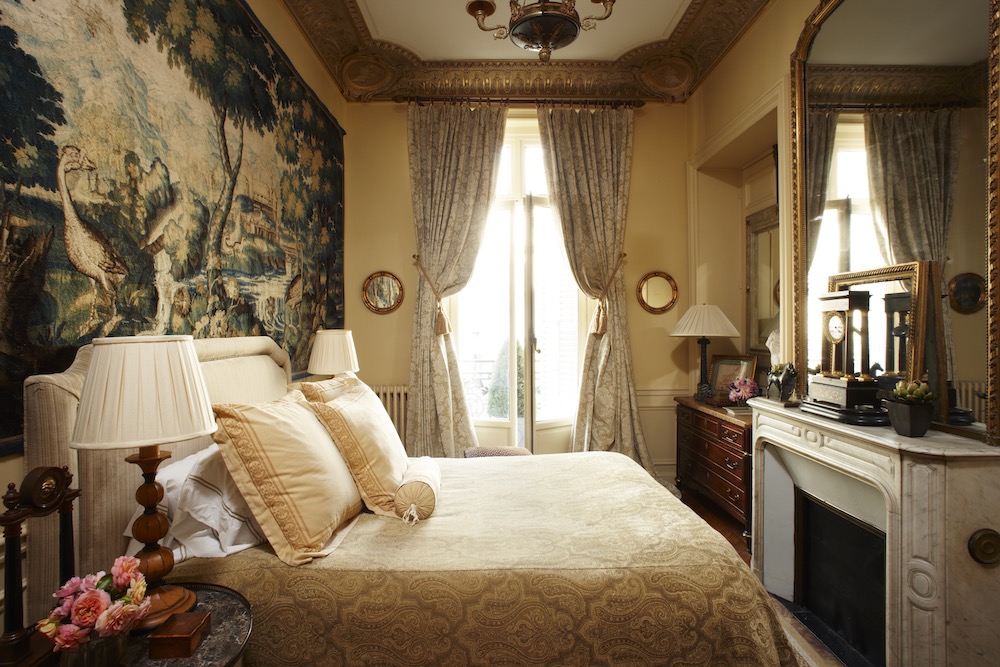
During Maison and Deco Off in Paris that year, design friend Rachel Laxer introduced me to Robert Four gallery. The largest manufacturers of Aubusson tapestry weaving, they carry on a 500 year old heritage of timeless tradition with innovative technique and modern artistry. Following World War I, France led a revitalization of tapestry as an art form and since 1952 Robert Four has carried on this tradition, collaborating with modern artists using Aubusson techniques. Each contemporary Aubusson tapestry is an original work of art, limited to six copies in addition to two artist copies. They are authenticated and autographed by the author or someone authorized by the estate. Below, “Thyria” by Georges Braque.

French painter and tapestry designer Jean Lurcat was, with Francois Tabard, a master weaver at Aubusson, instrumental in creating these collaborations. He formed the Association of Cartoon Painters of Tapestry (cartoons are the elaborate drawings from which the tapestries are designed) and the Aubusson factory once again became a creative hub. His “Le colibri et la guitare” below.
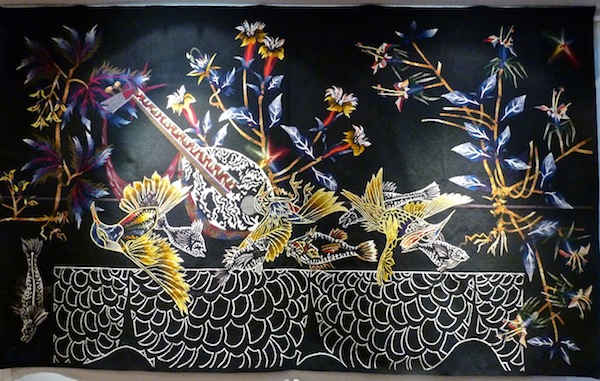
In 2014, the Metropolitan Museum, on the heels of their monumental textile show, Interwoven Globe, hosted Grand Design: Pieter Coecke van Aelst and Renaissance Tapestry (read about it here), offering great insight into both the history, craftsmanship and cultural significance of tapestry, as well as the brilliance and strategic entrepreneurial skills of the artist. A detail below reveals Coecke’s sense of humor as one putti pulls the other out of harm’s way from a falling volume. While tapestries nowadays may be appreciated primarily for their aesthetic appeal, in their Renaissance heyday, they served many other purposes – from functional (keeping heat in and drafts out) to storytelling as well as status symbol and portable propaganda for the royal owners.

More recently, the appeal of tapestries in interiors has been gaining ground. Today, you need only peruse the work of many top designers to see the resurgence of these woven wonders. Tapestry is perfectly suited to La Carlière, the beautiful 16th century manoir in Normandie of fashion designer Peter Copping and husband Rambert Rigaud, in their entrance hall below.
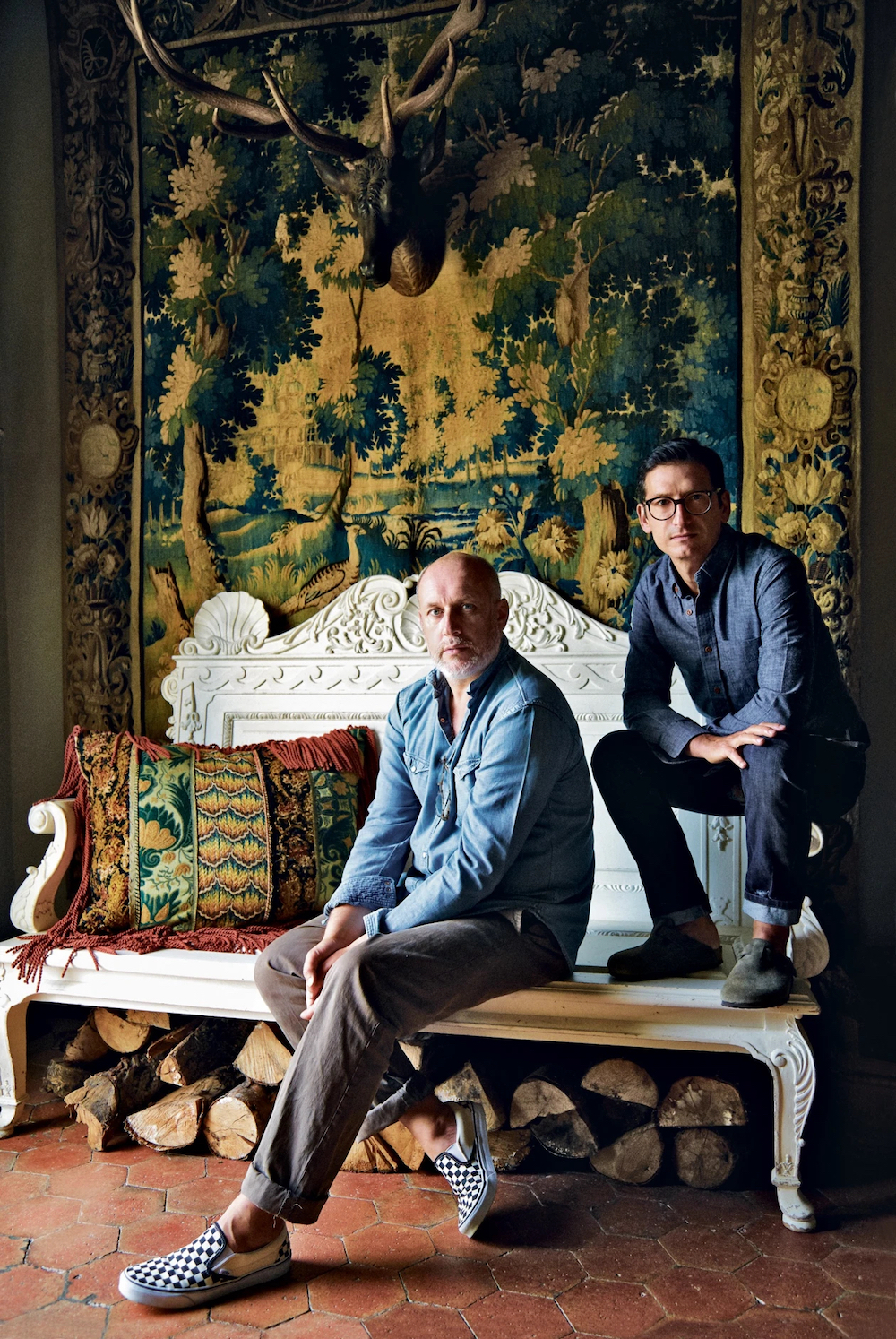
The grand salon below
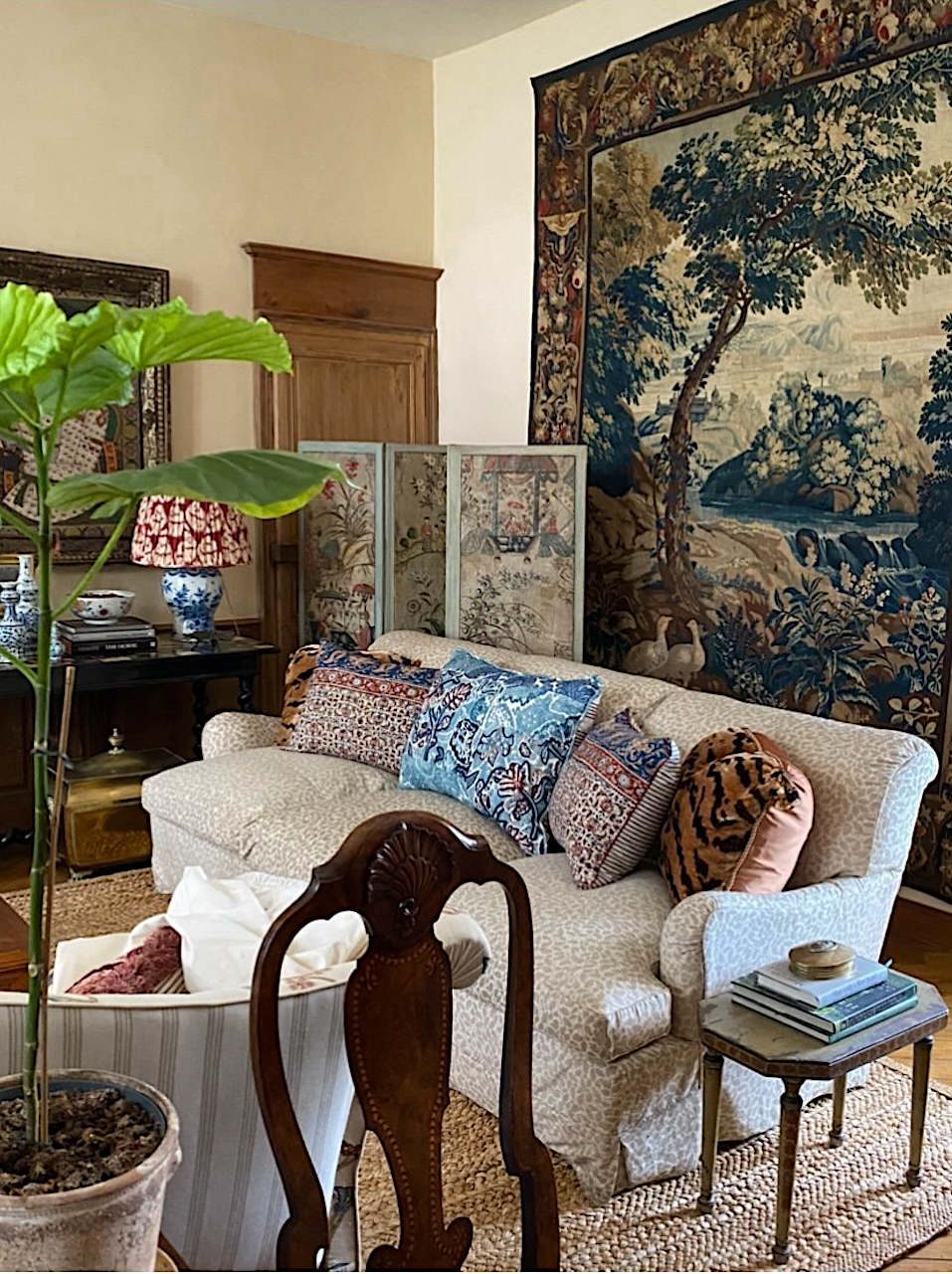
and a detail from their bedroom. As Peter explains, “Our Manoir, La Carlière, in Normandy dates from the 16th Century, and within the mix we like to have pieces that give authenticity. Three walls in our hallway are hung with Verdure tapestries, we wanted it to feel like you are in a forest – bringing the outside in.”
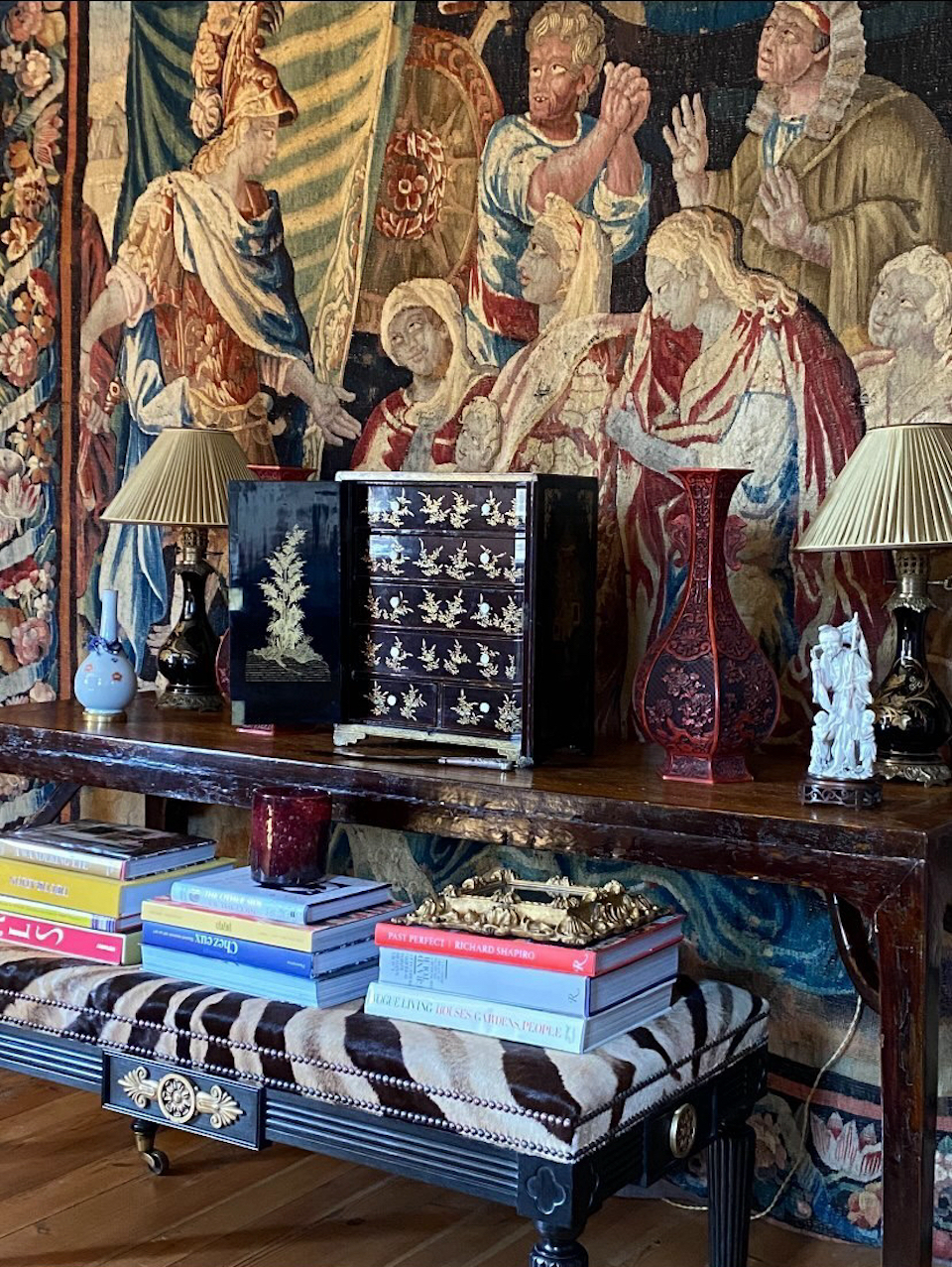
Alidad‘s design career began at Sotheby’s where his expertise in antique fabrics and textiles lay the groundwork for his layered and opulent interiors. Throughout his career, tapestries have played an important role. “For me, antique textiles are incredibly important in all my interiors. When I do my schemes I purposely leave gaps for old fabrics – tablecloths, cushions and tapestry. It sorts out quite a few potential issues with scale, especially in low rooms, texture and lastly include the old colors that I love. I tend to go for large tapestries with large patterns.
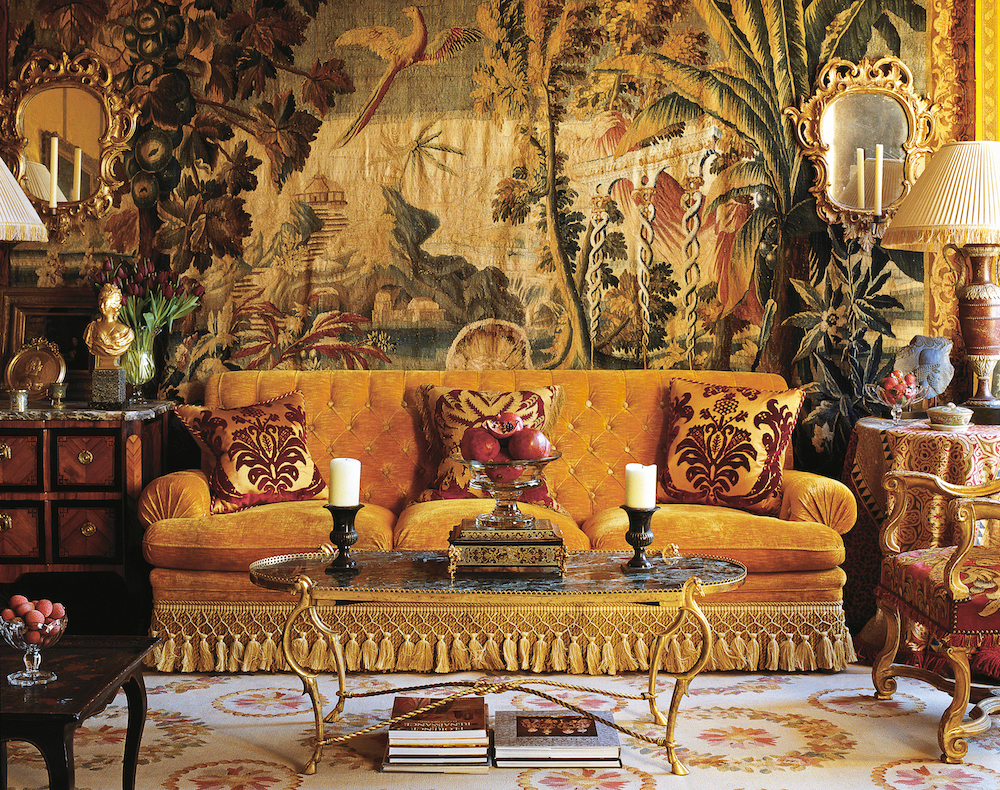
Their scale, colors and textures also look wonderful on the walls. A lot of people are afraid of them but having come from a textile background at Sothebys, I am very comfortable incorporating them. When I can’t have a huge tapestry, I always have tapestry cushions, it gives that generational layered look. They really completes my rooms. I especially love the boldness and colors of 17th c. tapestry. They are the equivalent, in terms of color, quality and storytelling to old master paintings, which are at least 10 to 30 times the price. “
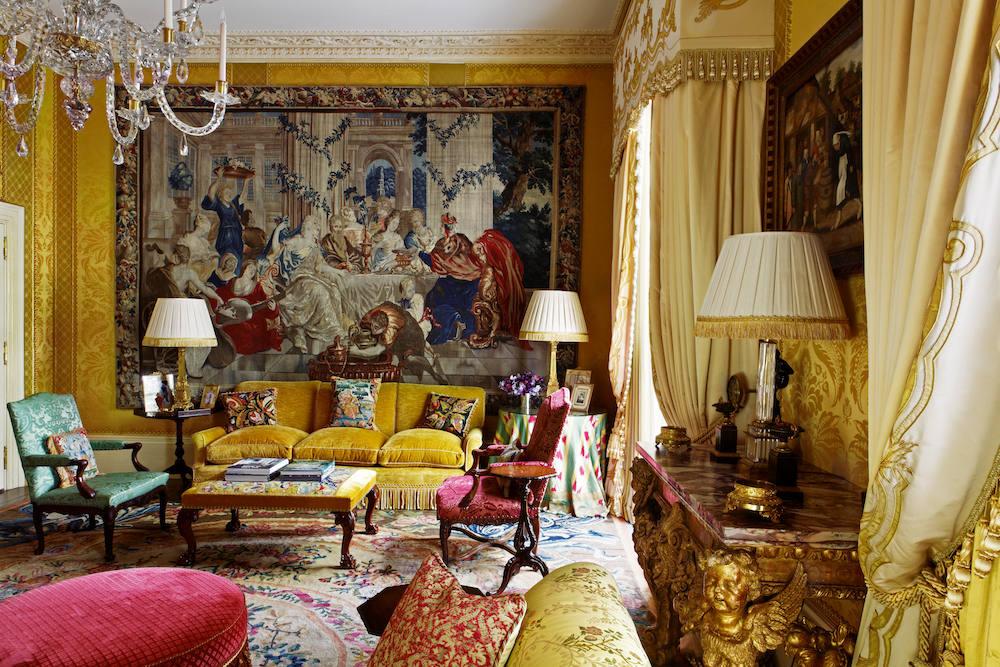
In architect and designer Martin Brudnizki’s maximalist country house recently featured in Architectural Digest, tapestries are perfectly at home, but he also incorporates them in more contemporary interiors such as in his New York apartment, below.
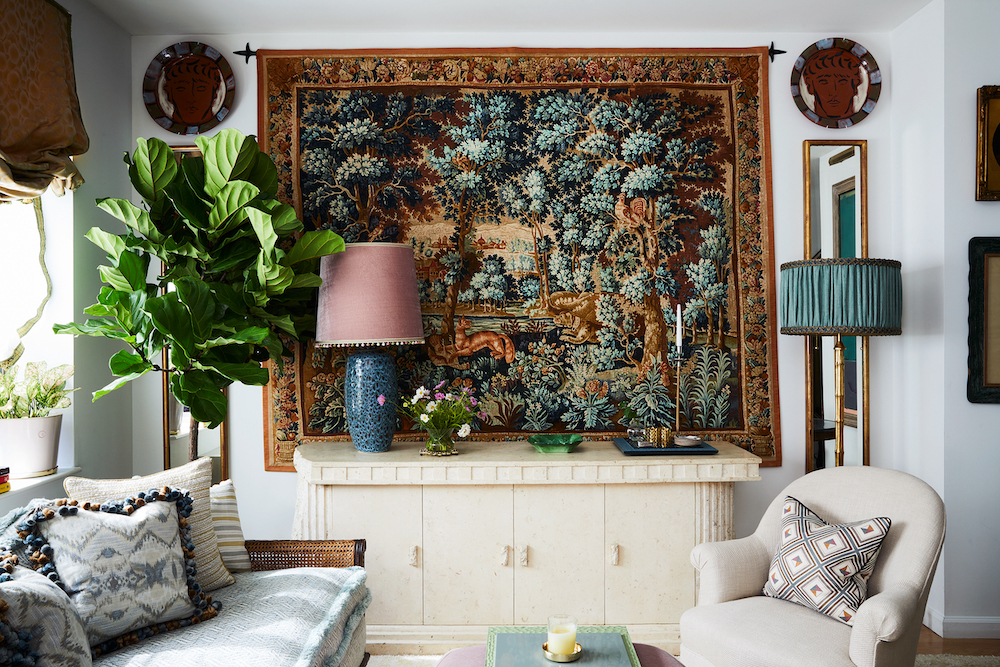
He explains, “Tapestries are great for interiors for two reasons. Nature and texture. The word vedure can be traced to the latin virere, meaning simply to be green and greenery and nature is always something we should encourage in our interiors. From the start of civilisation we have copied from nature for art and for good reason as it not only looks beautiful but feels beautiful to be around. Tapestries are a great way of getting nature and greenery into our interiors where you might not have the natural light to have planting. The texture they provide furthers this sensory experience and can help enliven a bland space by providing a tactile moment in and amongst plain plaster walls. All in all they are a simple and easy way of adding life to your interior.”

Henriette von Stockhausen of VSP Interiors acquired her knowledge of and appreciation for antiques at Sotheby’s Institute in London and then the prestigious Inchbald School of Design. She now specializes in interiors for architecturally significant or interesting buildings, mixing antique textiles and antiques with contemporary art and furnishings.
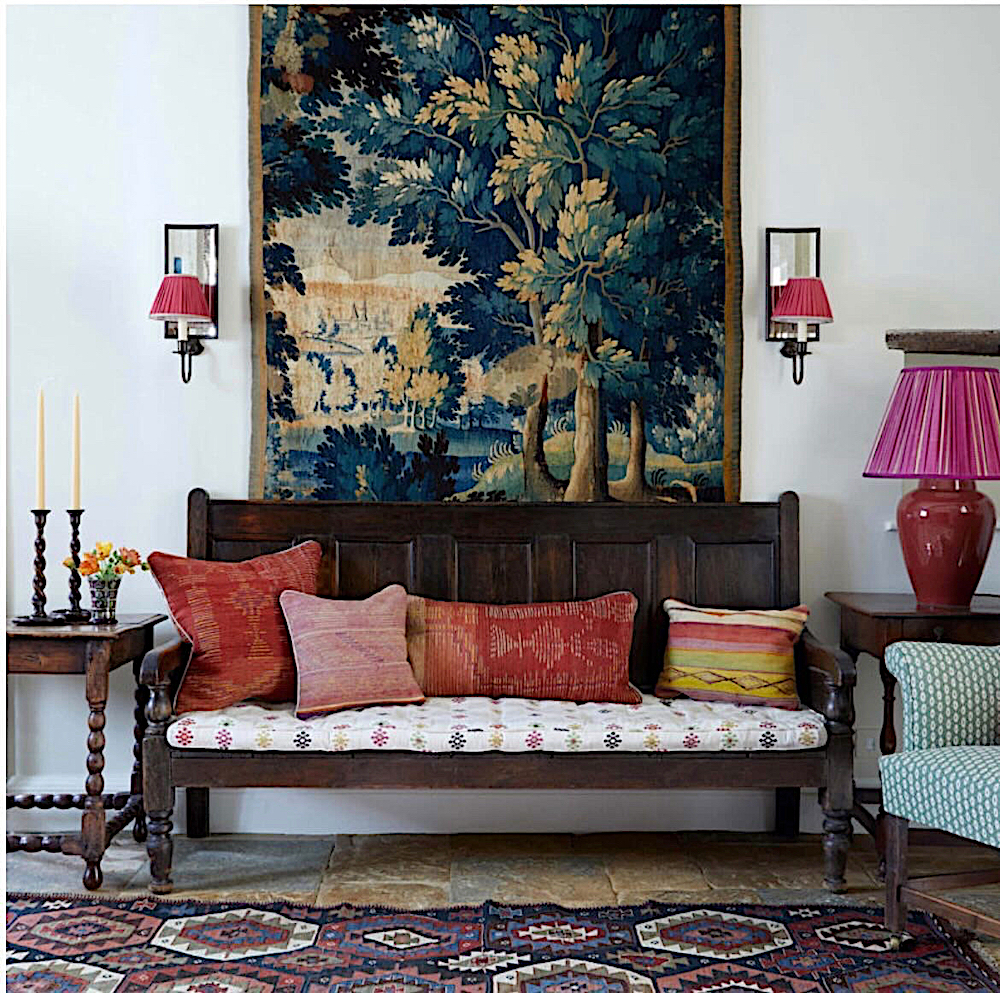
“I adore tapestries of all kinds but my favourites are Aubusson verdure – green is my favourite colour and by hanging them in interiors it feels like bringing the outside in- also their faded colours and textures lend something really special to a room- a story that is told of a time gone past- a sense of history and place that I like to incorporate into my spaces. Even remenants make wonderful cushions and add that special something – that feeling that an interior has evolved over time – to a sofa rather than looking brand new.”

While she loves the real thing, sometimes a wallcovering emulating the effect of verdure tapestries is more appropriate for a space, such as the historic Watts of Westminster Henriette used below, printed on rough linen to achieve a tapestry-like texture.

Jorge (George) Perez-Martin of Brownrigg Interiors in Tetbury, Gloucestershire, England is also a tapestry fan. “At Brownrigg we have long been passionate about using tapestries in our interiors, to add a depth and richness to spaces, that can difficult to achieve with a wallpaper or paint or a single piece of art. … (the back landing of his house below)

Clients often come to us when they are looking to source something different and large scale to fill a wall and a tapestry of 2m to 4m can be surprisingly affordable when compared to an artwork of similar size. Typically the tapestries that we source are C17th and C18th Flemish and French (Aubusson and Felletin) in wool and silk. The subject matters can vary widely but the appeal is always powerful as they are such a rich and deep back drop, perfectly setting the scene for artworks and furniture from different countries and periods.” (downstairs at Jorge’s home)

If you are looking to add a tapestry to your home, a great source here in the U.S. is SHAHKAR Fine Carpets . Owner Sheila Noorollah explains their allure. “Tapestries not only provide an added layer or texture to walls of a modern home, but also present a layer of luxury due to the softness of the wool and the rich colors of the gorgeous scenes they depict. With more time spent at home due to the pandemic, Verdure landscape tapestries have been wildly popular since it is a clever way to bring nature and the outdoors into the home.

The Flemish Verdure tapestries (17th and 16th c. examples from their collection above and below), because they depict nature, happen to be the most popular because they are timeless; trees and lush greenery look the same today as they did 400 years ago and can effortlessly be worked into a variety of interior design styles.
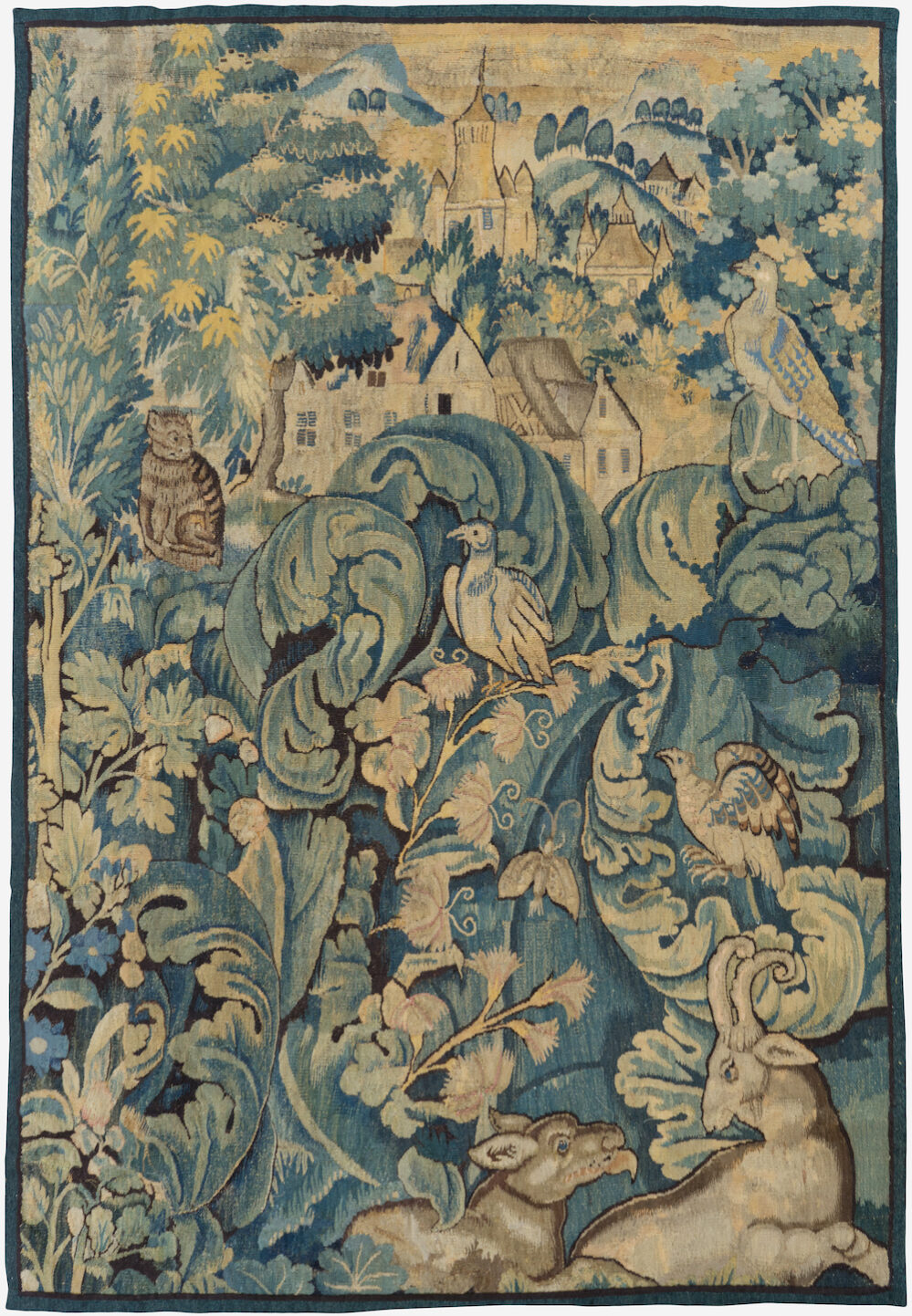
The traditional grand tapestry depicting a mythological scene or a historical event (such as the 17th C. Brussels Baroque Mythological Tapestry or Mars and Venus, below) are gaining popularity for slightly different reasons. These pieces are quite large and rich in color and help create luxe interiors as a centerpiece to a room or as an elegant backdrop and are about the same price or less than a painting of the same size and scale, and can conform to the shape of a room where a painting usually cannot.”





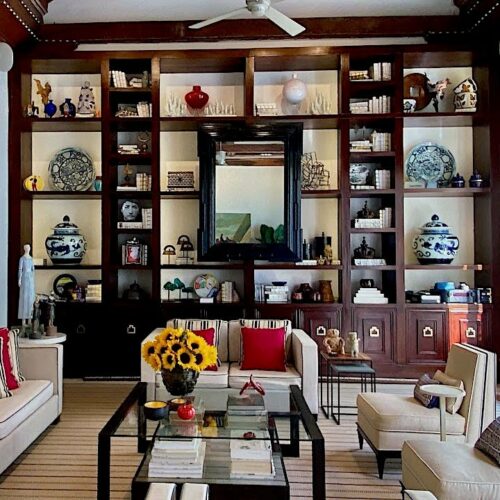
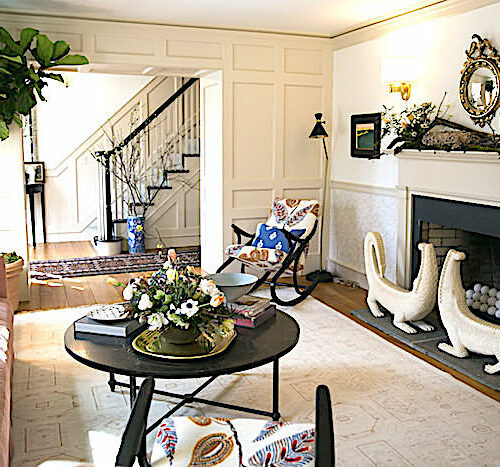

Lovely article again ! I began my interest in tapestries when living near the Robert Four gallery in Paris then later I bought two large tapestries by Bissery in gorgeous autumn colours. Jean Lurcat is a favorite artist, I do have a couple of lithographs of his and a gouache. They were affordable then but not so much now. I then bought a large printed tapestry of fishermen again from Bissery in gorgeous colours of blue and then a large hand embroidered tapestry in the antique style, years of work ! Recently I bought for my bedroom another antique style tapestry from the 60’s, not too imposing. I have to stop there because hanging them is problematic because firstly space then style as they tend to dominate the room, you cannot simply ‘add’ them to an existing decor, you have to work around them. Some years ago I purchased some objects from a cellar in the Marais in Paris and the lady picked up some pieces of fabric to wrap them with, it was dark and I didn’t notice what they were but on arrival home they were wide strips of Aubusson tapestries! I will find a use for them one day but will NOT be cutting them into pillows as many people do. Thank you for all your lovely articles, hugs from France xx
Lucky, lucky you Stephanie!! Love hearing that! Thank you for sharing.
Yet again, a superbly researched and curated article that is highly informative, while segueing seamlessly into demonstrating how relevant tapestries are to today’s interiors.
Just beautifully put together.
Well thank you so much!! Glad you enjoyed.
GORGEOUS READ!
I ADORE TIMOTHY AND ALL HIS INTERIORS…………..THAT ALDIAN?SPELLING!HAS ME TOO UNDER HIS SPELL!